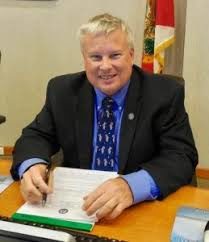By Dale Martin
March 25, 2022

One of the issues that came to the forefront of City Commission discussion at its January 26 Goal-Setting Workshop was the preliminary consideration of seeking voter approval for a bond to fund significant projects or portions of several such projects.
The bond is, in general, a loan for the City. While different types of bonds are available for municipal financing, the City Commission, in this case, is contemplating a General Obligation (GO) bond. This type of bond pledges the City’s taxing authority to re-pay the bond (annual principal and interest charges). A GO bond requires the approval of City voters. If approved, the principal and interest charges are funded through a separate tax levy.
The amount of the levy varies due to the terms of the bond (amount, duration) and the cost of annual principal and interest payments (which, for the most part, are somewhat consistent across the term of the bond). In some ways, as a comparison to individual finances, it is comparable to a mortgage: high dollars, long repayment.
The City recently completed payments for a previous GO bond: the acquisition of what is known as Egans Creek Greenway. The effort to fund and acquire the Greenway was spearheaded by local leaders twenty years ago. The voters approved the GO bond and the resulting funds were used to acquire an environmental jewel. The repayment of that GO bond appeared on City residents’ tax bills as a separate levy as “FDNA BCH VOTER APPR DEBT.” Although it appeared on residents’ 2021 taxes, the amount was $0.00: the bond has been repaid. That line item will now be removed from tax bills.
It could re-appear, however, as a result of the current discussion. At the January 26 meeting, the Commissioners considered three general projects: continued infrastructure work along the Amelia River waterfront (seawall and shoreline protection and pedestrian walkways); rejuvenating downtown infrastructure (streets, sidewalks, lighting, and landscaping); and replacing or repairing City facilities (Atlantic Recreation Center, Martin Luther King, Jr. Recreation Center, Peck Center, lighthouse). Each of those projects was estimated to cost $20 million. A fourth project, the expansion of non-motorized trails, was raised for consideration, but due to the Commission’s prioritization of need, failed to move forward for additional review. City staff was directed to prepare a more detailed cost estimate for each project.
As an additional discussion at the January 26 meeting, City staff presented preliminary projects to utilize the $6.5 million of American Rescue Plan (ARP) funding provided to the City from the federal government. Those funds, however, are more constrained in their use, primarily being limited to water, wastewater, stormwater, and broadband infrastructure. The federal government has somewhat broadened the legal use of the ARP funds, but, as described above, the exclusive use of those funds for any of the three projects under consideration for a GO bond would not be sufficient to complete those projects.
City staff presented costs estimates for the three projects at the March 1 City Commission Workshop. The two leading projects for consideration were the Amelia River waterfront and the downtown revitalization, with each project estimated at approximately $16-17 million.
The summary of the waterfront protection and stabilization project described the project as continuing the effort currently under construction at the south end of Front Street (south of Ash Street, commonly referred to as Parking Lots C and D). The remainder of the project is proposed to continue the protection effort further south from the parking lots and also northward to approximately Alachua Street. Specifically, the project would include the planning, design, and construction of a seawall north of the boat ramp. The scope of the project is contingent upon the resolution of current issues related to Brett’s Waterway Café and private property owners north of the City Marina. Those resolution efforts are ongoing.
The summary for the downtown revitalization project described the need to rejuvenate downtown streetscape and infrastructure. The current downtown infrastructure was constructed approximately fifty years ago (and, for as highly regarded as it is today, it was significantly controversial back then). Downtown, generally defined as the area bounded by Ash, Alachua, Front, and 8th Streets although it does extend in some areas beyond those limits, has a variety of immediate stakeholders: the property and business owners, residents, Main Street, several City departments (Parks and Recreation, Streets, Utilities), the Historic District Council, the Community Redevelopment Agency Advisory Board, and, most notably and finally, the City Commission. Efforts have begun to discuss proposed downtown improvements.
Downtown has a variety of sidewalk patterns and streetlamp configurations. Trees need to be replaced and, to ensure the long-term viability of those trees, adequate landscaping and irrigation must be considered. The utilities, underground and out-of-sight, are in need of modernization. The revitalization effort would prepare the downtown area, a key economic factor in the City’s success, for the next several decades.
The City Commission will continue to discuss the possibility of seeking approval for a GO bond. Several factors remain undetermined, but must be decided shortly: the amount of the bond, the referendum process (mail-in ballot, special election, primary election, general election), ballot language, and the consideration of other possible bond efforts by either Nassau County or the School Board. These decisions must be made shortly in order to schedule a referendum this year to raise the funds and begin the selected project, if approved, next year.
